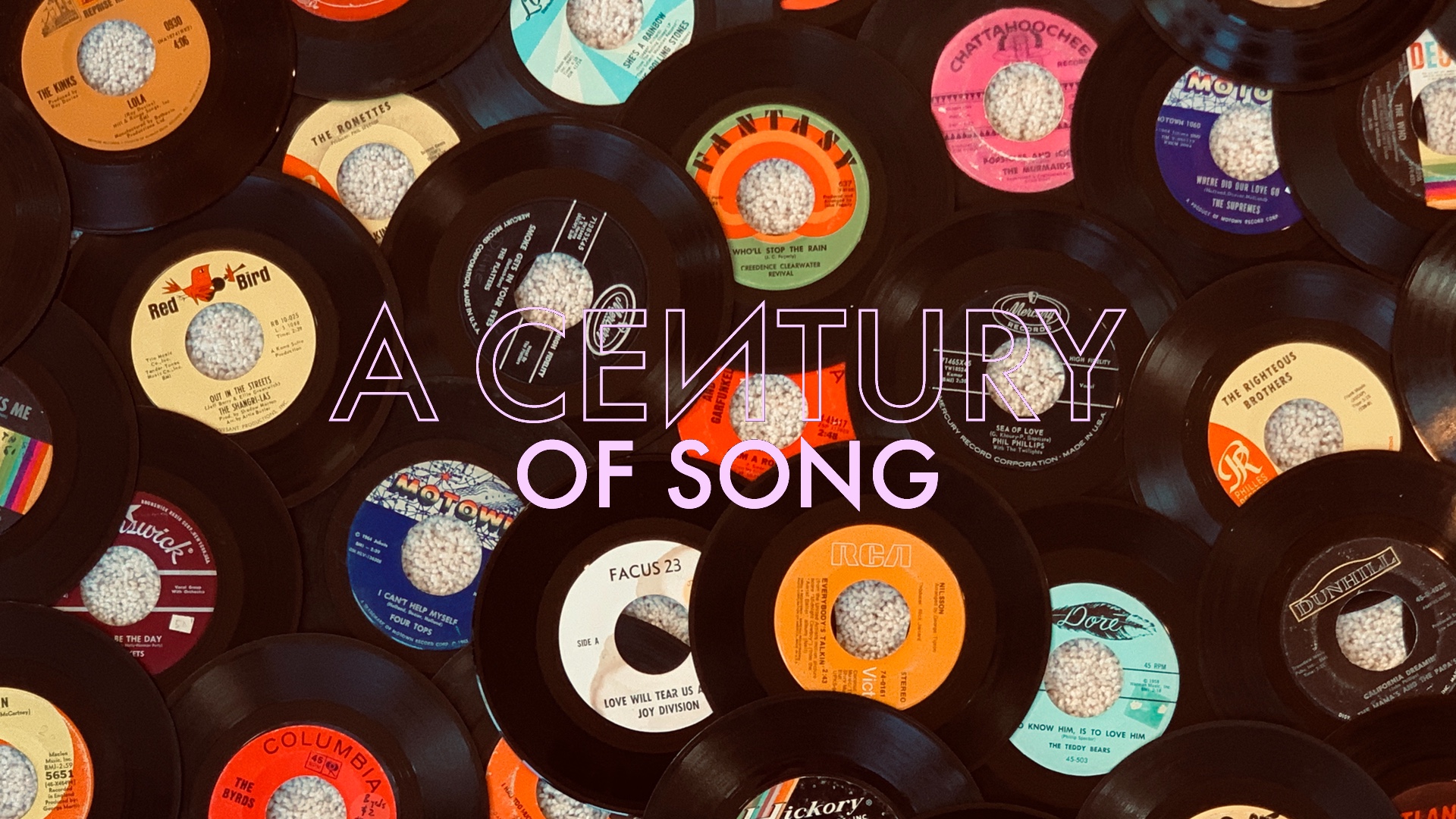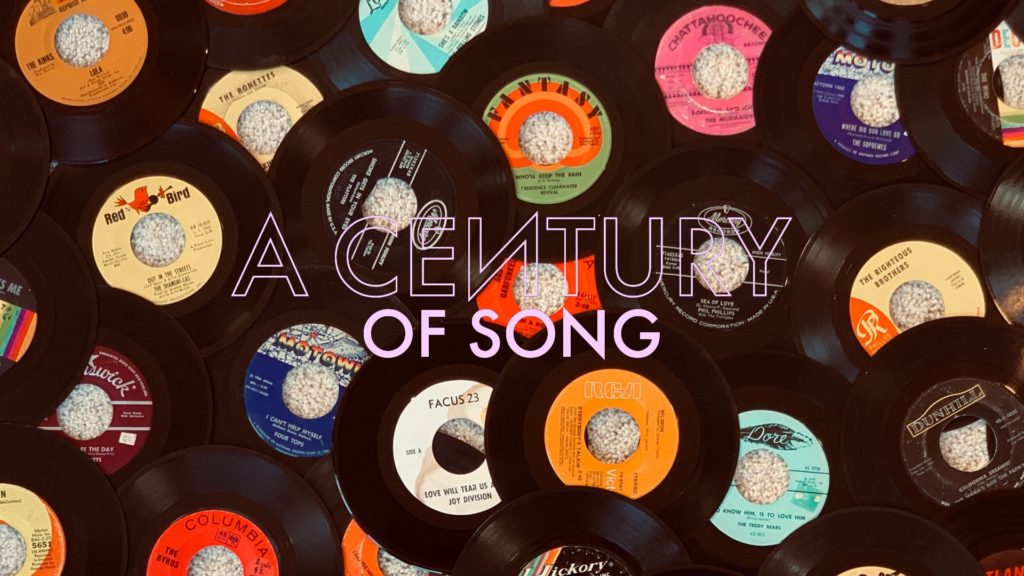
A Century of Song is an attempt to summarize 100 years of popular music through 1000 carefully chosen tracks. Included within this list are landmark singles, stellar album cuts, huge hits, hidden gems, and more than a few personal favorites. Read the introduction for the project here, and enjoy the embedded videos and Spotify playlist.
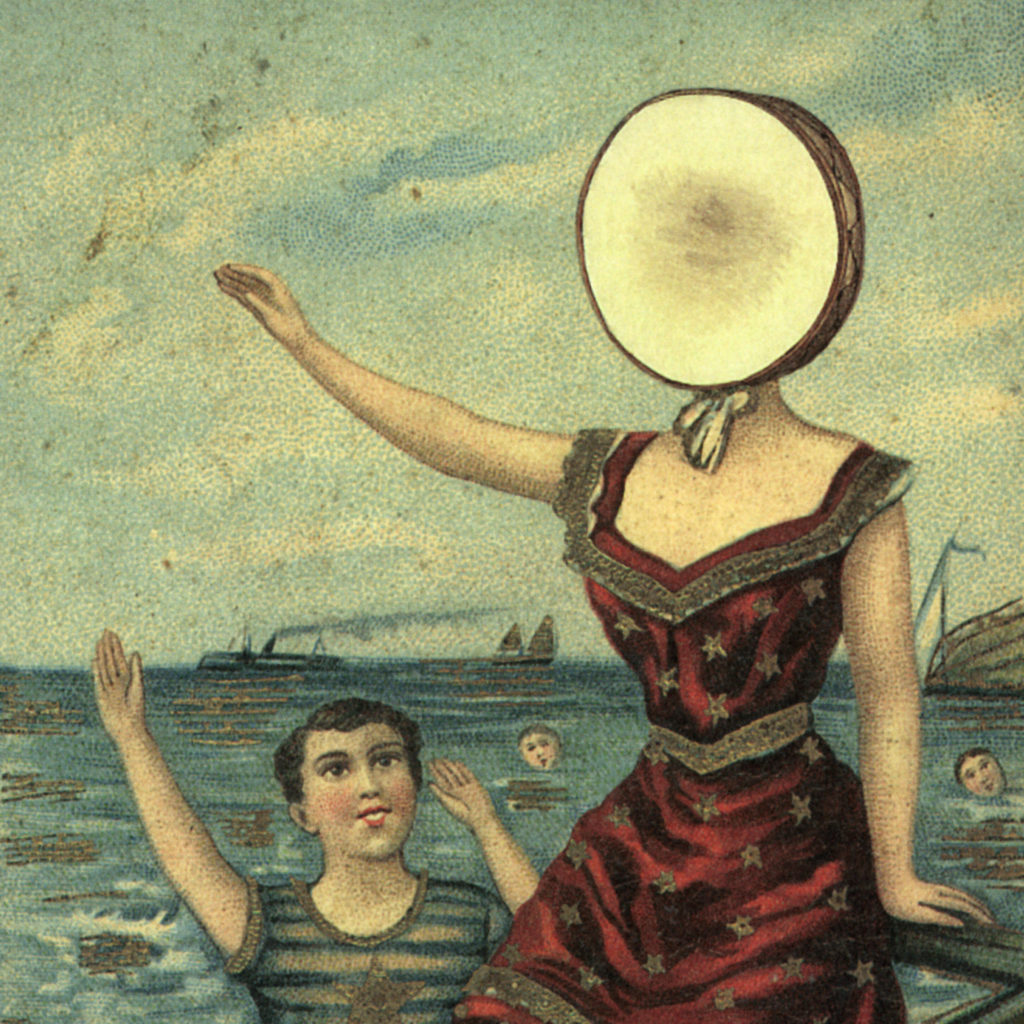
300
I was something of a late arriver to Neutral Milk Hotel’s In the Aeroplane Over the Sea, hearing the album for the first time during the autumn of 2003. By that point, Aeroplane‘s legend had undoubtedly grown, but had not quite attained the mythological status that it would achieve over the next several years.
I mention all of this, because there is a certain cynicism that creeps into discussions about this album. While today, Aeroplane serves as a signifier for a certain type of music fan, it was entirely common for those us who heard it within the first decade of its release to simply approach it as just another album.
I came to Aeroplane with only the slightest of knowledge about it – and no idea of the Elephant 6 Recording Company, the Anne Frank connection, or Jeff Mangum’s subsequent status as a recluse. I was about fifteen seconds into the album when I realized that I was hearing something special. Within a minute, I had considered halting my drive to work, calling in sick, and spending the day unpacking the rest of the album.
There was a world contained within even just those first few warm acoustic strums. Then, there was Mangum’s double-tracked voice – weaving a set of lyrics that were somehow surreal, mundane, and life-affirming all at the same time. Before too long, I would come to believe that anyone else who heard what I was hearing in this strange music was a kindred spirit of sorts. Sometimes, we can get too protective of our favorites, but over the years, I have been heartened to see just how many others have been similarly pulled in by this weird, wonderful record.
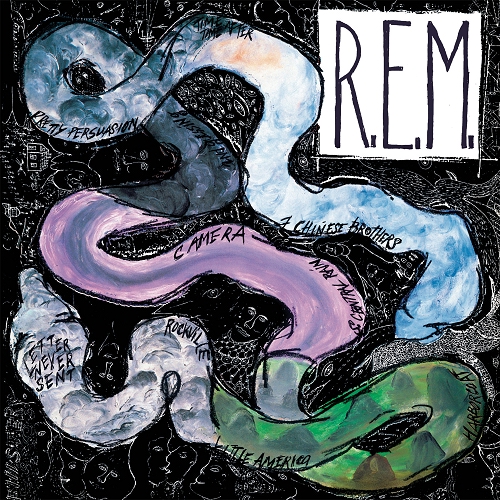
299
R.E.M. avoided what seemed like an inevitable sophomore slump with 1984’s Reckoning – an album that saw the Athens, Georgia quartet bringing a newfound urgency to the pastoral sounds of 1983’s landmark debut, Murmur. The album’s first single, “So. Central Rain” stands as one of the group’s most melodic and haunting tracks.
Reckoning found Michael Stipe taking a turn toward a more direct lyrical nature. While “So. Central Rain” still trades in a certain degree of vagueness, Stipe’s insistent repetitions in the chorus – “I’m sorry” – give the song a biting character that is more immediately relatable than the band’s more cryptic earlier work.
That plaintive, urgent nature is similarly reflected in the group’s performance. Peter Buck opens the track with one of his finest 12-string riffs, Bill Berry lets the cavernous reverb do much of the heavy lifting of his drum work, and utility man Mike Mills turns in a great barreling piano and vibrantly melodic bass line. The band were understandably excited about the track, playing it on their first nationally televised performance before it even had a title.
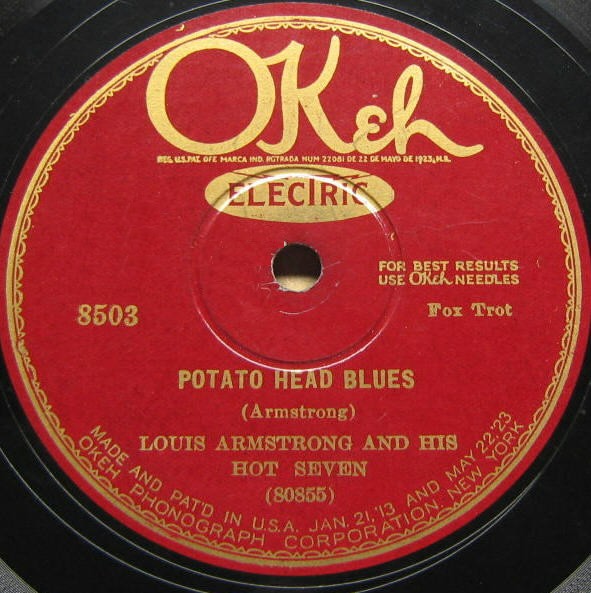
298
With his “Hot Five” group newly – and only temporarily – expanded by the addition of Pete Briggs (tuba) and Baby Dodds (drums), Louis Armstrong rushed into the studio in May 1927 to record a series of tracks that would further cement his already growing legend. “Potato Head Blues” stood as the finest of these recordings.
From the moment that Armstrong had entered the studio – specifically, his 1923 session for “Chimes Blues” as a sideman to King Oliver – he displayed an unrivaled mastery as an instrumental presence. For the first half of “Potato Head Blues,” Johnny Dodds – who had played with Armstrong in Oliver’s band – is the star of the show. Then, a brief banjo break by Johnny St. Cyr introduces the group’s leader.
Accentuating Armstrong’s solo, the rest of the Hot Seven play the next sixteen bars in stop-time. The resulting clarity and force of his performance is nothing short of stunning. Holistically speaking, Armstrong would create a couple of tracks that loom larger in his legacy, but “Potato Head Blues” stands as the peak of his remarkable instrumental prowess.
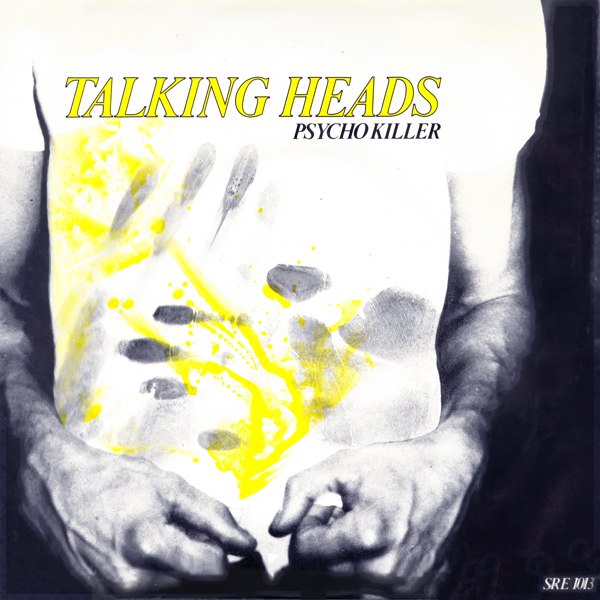
297
Before they became a groundbreaking, genre-bending, polyrhythmic force of nature, Talking Heads were simply one of several superb New Wave/post-punk groups making the rounds at New York’s legendary CBGB. Their third single, “Psycho Killer,” stands as the manic peak of that incarnation of the group.
Carried by Tina Weymouth’s instantly iconic bass line, “Psycho Killer” hints at the rhythmic gifts that would eventually become Talking Heads’ trademark. While there is an undoubtedly sinister character to the music, it is delivered with a winking playfulness that would also remain one of the group’s enduring strengths.
At the center of the track, of course, was vocalist David Byrne. Past, present, and future, it seems that no think-piece on Talking Heads is allowed to exist without the words “nervous” or “anxious” appearing at least once. This song was where that quality would first truly become associated with the group and its frontman. Byrne stands as the song’s tortured narrator – and likely title character. He delivers a compelling performance that would make “Psycho Killer” the first great track from a truly singular band.
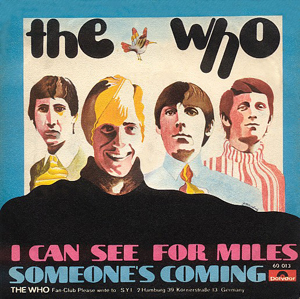
296
The thunderous centerpiece to their brilliant 1967 album, The Who Sell Out, “I Can See for Miles” finds The Who near the peak of their powers. No less an authority than Pete Townshend referred to it as the “ultimate Who record,” and American audiences seemed to agree – making it the band’s only top ten hit in the United States.
The ferocity of “I Can See for Miles” was unmatched by a major rock band when it arrived in the autumn of 1967. Townshend’s crashing power chords were made for his signature windmilling. Keith Moon delivered one of his most cacophonous performances on record, while John Entwistle remained the band’s steady – and occasionally flashy – anchor. Delivering his strongest vocal performance to date, Roger Daltrey took a step toward the bold assertiveness that he would display on the band’s upcoming opus, Tommy.
Famously, a contemporary review of “I Can See for Miles” would prompt Paul McCartney to write “Helter Skelter” (#788), before even hearing The Who’s song. Such was the nature of competition among the major British groups of the time. Ultimately, The Who may not have had the cultural impact of The Beatles, the wit of The Kinks, or the longevity of The Rolling Stones, but as a rock band, they were unrivaled.
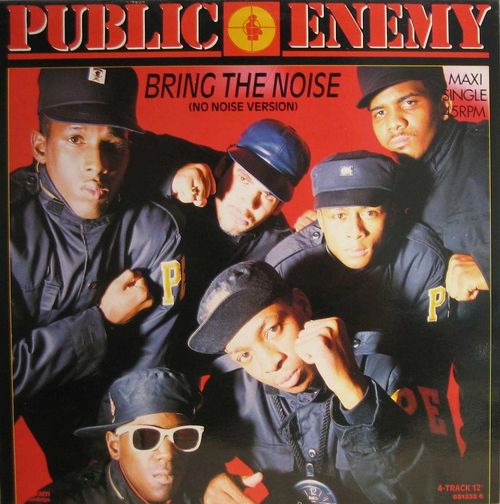
295
By 1987, rap music had proven to be both a cultural and commercial force, as evidenced by the popularity of groups like Run-D.M.C. and Beastie Boys. That year – alongside the debut by Eric B. & Rakim – Public Enemy would help usher rap into a new level of musical and lyrical sophistication with their landmark debut album, Yo! Bum Rush the Show.
While Bum Rush would introduce the world to the talents and politics of the group’s leader, Chuck D, it was Public Enemy’s 1988 follow-up, It Takes a Nation of Millions to Hold Us Back, that would truly redefine hip-hop for a new generation. Featuring Chuck D’s densely complex rhymes and the maximalist production of The Bomb Squad, It Takes a Nation was hip-hop’s first widely acknowledged masterpiece, and it remains arguably the most important and influential rap album of all-time.
“Bring the Noise” was the record’s first proper track – a stirring display of artistic growth from the group’s already impressive debut. A pummeling production anchors the track, and Chuck D’s commanding performance – rich with references to Black nationalism – would almost singlehandedly make him an icon in both the hip-hop and rock worlds.
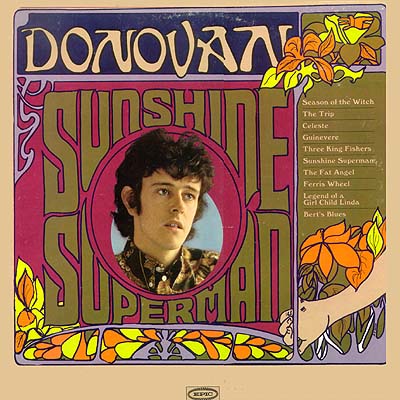
294
Among the perennially underrated Donovan’s finest songs, “Season of the Witch” was never released as a single. However, the track’s ominous nature would ultimately make it one of the most recognizable recordings of his career.
As the centerpiece to the album that saw the Scottish singer-songwriter leaving behind his days as a Dylan acolyte, “Season of the Witch” finds Donovan standing at a crossroads. In one direction was the folk music of his past, and in the others were the baroque pop and psychedelia of his future. “Season of the Witch” harkens back to the grim dread of early blues tracks, but its widescreen musical and lyrical references cast it as something practically apocalyptic.
Donovan never got to be Dylan. Nor would he ever get to be The Beatles. However, despite a reputation as something of a lightweight, he would produce some of the most evocative music of rock’s golden age. “Season of the Witch” stands as one of the most compelling pieces of evidence.
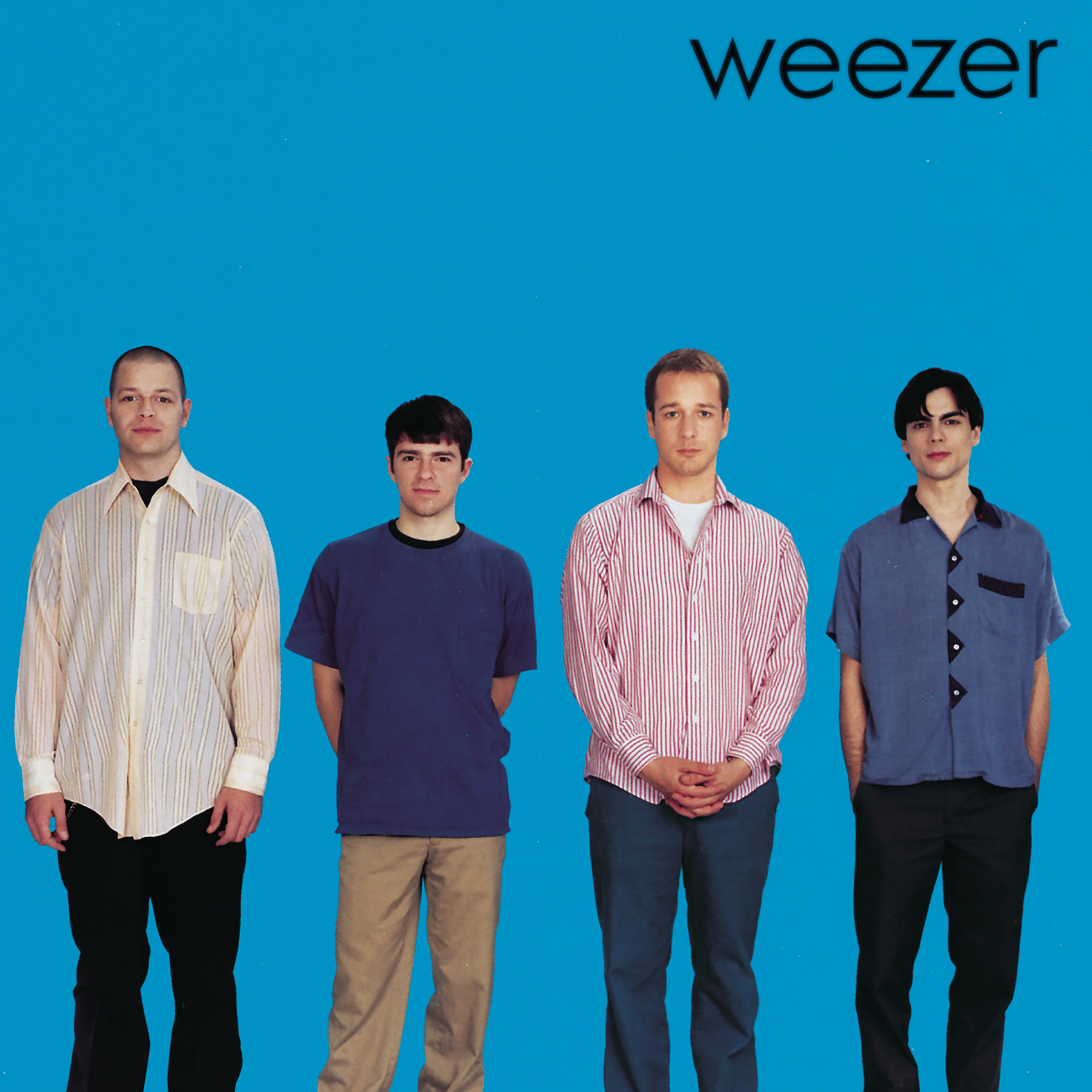
293
Like so many others, I don’t have the slightest idea what to make of Weezer today, and that ultimately makes the legacy of their best work difficult to appraise. I’ve written them off entirely, only to be surprised by a genuinely decent pair of albums. I’ve since written them off again, but still managed to be talked into seeing them play live with Pixies – a group that at least had the good sense to bottom out at middling.
Still, those first two albums remain hallmarks: not just for me, but for virtually every geeky music nerd of my generation; and the next generation; and the next. Whatever their legacy may be, it’s proven to be a surprisingly durable one. Such is the power of combining unabashed dorkiness with impeccable hooks. No song looms larger in that legacy than “Say It Ain’t So,” the third single from the band’s self-titled debut album.
As a novice teenage guitarist when the “Blue Album” came out, “Say It Ain’t So” was a godsend. It was a song that sounded great acoustic or electric, but was still easy to play. It was a song that could be played in a crowd – one that enough other people knew, so that my own voice wouldn’t stand out. Everybody I knew seemed familiar with it, and many of them seemed to have a similar draw to its despondent emotionalism.
Had we all been five years younger, we probably would have gravitated toward some truly terrible artists that combined similar emotional expression with far worse music. But we weren’t. Us quasi-Gen-Xer/quasi-Millennials managed to frequently co-opt cynicism from the former, and disposability from the latter. However, I can’t help but find the fact that musically discerning kids of a similarly disaffected nature continue to discover this song – and its parent album – over two decades later to be pretty awesome.
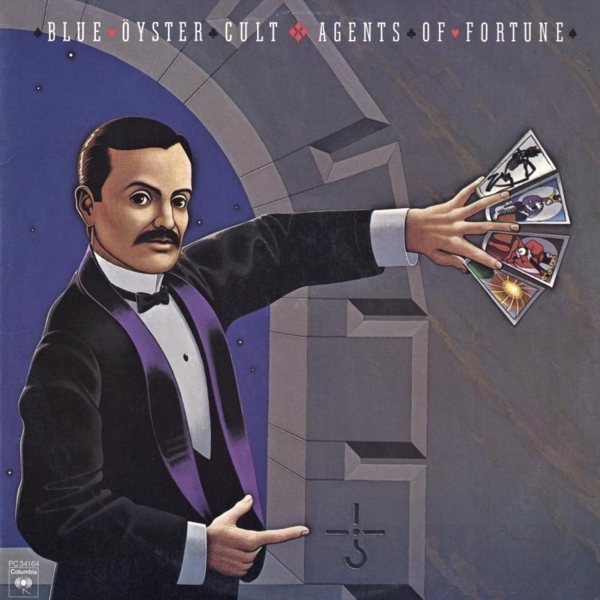
292
Making a great song and making a great album are two very different accomplishments. First off, plenty of artists and groups who achieved the former task were never even given a chance at the latter. Some of my RateYourMusic cohorts may argue that I need to give Secret Treaties another listen, but to my ears, Blue Öyster Cult were a thoroughly “meh” band. However, they managed to achieve transcendence for five glorious minutes.
“(Don’t Fear) The Reaper” is arguably the most haunting track to ever achieve ubiquity on classic rock radio. Placing it in such close proximity to detritus like “Hot Blooded” and “We’re an American Band” did it no favors, but the song’s engaging minor key melody, spectral backing vocals, and dramatic instrumental mid-section helped it stand out like a beacon.
Then, there’s the subject matter. Easily the darkest, most death-obsessed song to be regularly spun by the stereotypical morning radio crew, “Reaper” was mesmerizing, where its competition for airspace was content to simply be fun. For that alone, the song stands out as a rare bright spot from a time in which my listening habits were still largely dictated by forces out of my control.
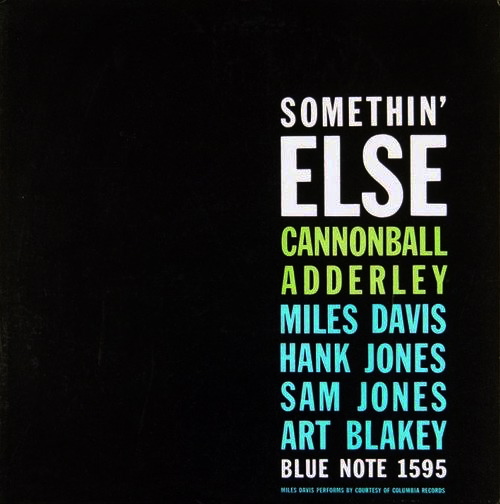
291
Alto saxophonist Julian “Cannonball” Adderley briefly played in Miles Davis’ sextet in 1958, and during that time, Davis would return the favor – making a rare appearance as a sideman on Adderley’s career-defining Something Else that year. Brought to Adderley by Davis, “Autumn Leaves” would be the highlight of that 1958 album.
Written in 1945 by Joseph Kosma, “Autumn Leaves” had a melody perfectly suited for Davis’ signature Harmon-muted trumpet. Bearing a vague resemblance to the noir-ish leanings of his contemporaneously recorded soundtrack for Ascenseur pour l’échafaud, Davis’ work on “Autumn Leaves” stands among the most enchanting moments from his catalog.
The decidedly cool nature of “Autumn Leaves” means that the session’s other visionary, Art Blakey, has little room to stretch out. However, the “wow factor” provided by the work of Davis, Adderley, and pianist Sam Jones is more than enough to make this one of the most compelling recordings of jazz music’s golden age.
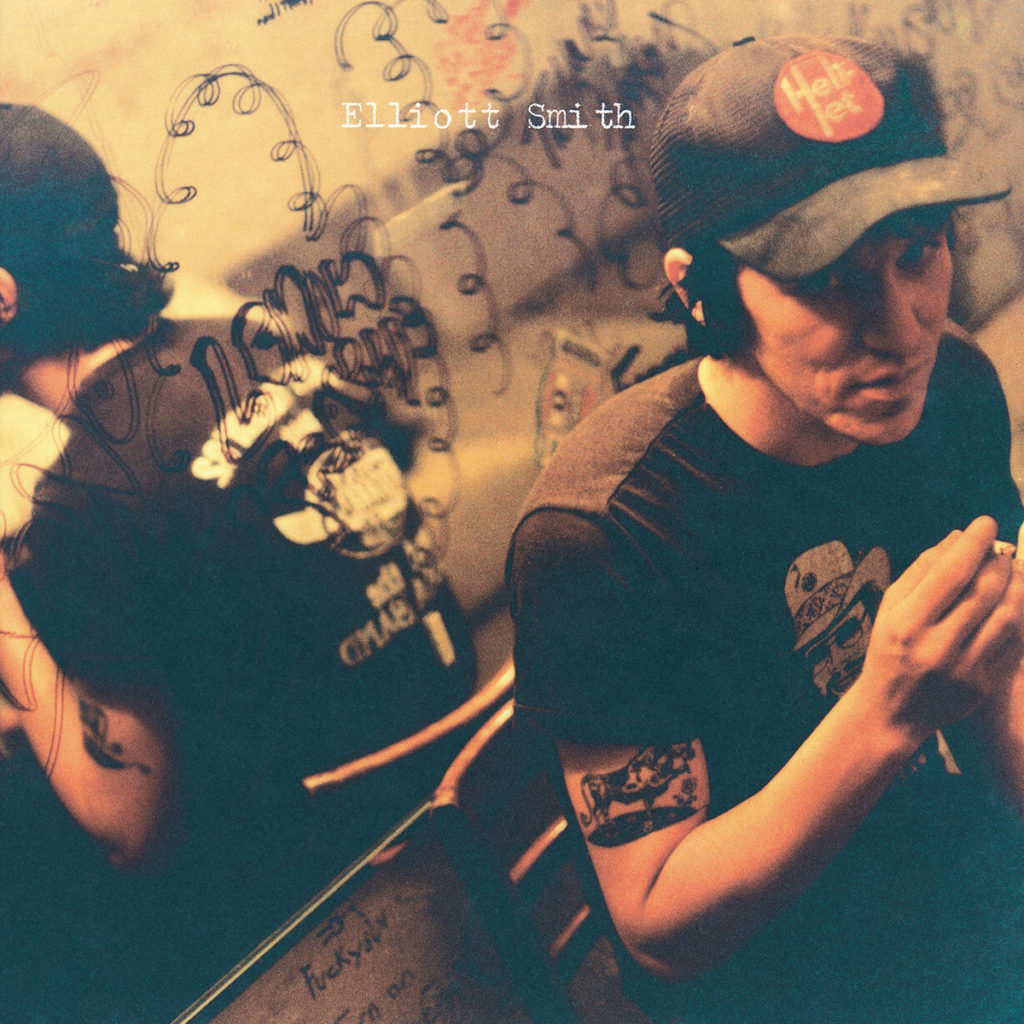
290
Elliott Smith’s third LP, 1997’s Either / Or, is one of the best singer-songwriter albums of its – or any – era. Packed front-to-back with deeply affecting tracks that found Smith at the top of his compositional powers, the record was also a musical tour de force for the Portland songwriter, who performed all of its instrumental parts himself.
Though he was a talented keyboardist and a surprisingly nuanced drummer, Smith was, above all else, a phenomenal guitarist and singer. One of Either / Or‘s peak moments, “Angeles” is arguably the most convincing example of Smith’s proficiency in both regards.
As is the case with much of Either / Or – and a great deal of his catalog as a whole – “Angeles” can be a heavy listen. However, like Nick Drake – to whom he was frequently compared, even before suffering a similarly tragic fate – Smith combined haunting vocals with impressive dexterity to create songs of incomparably fragile beauty.
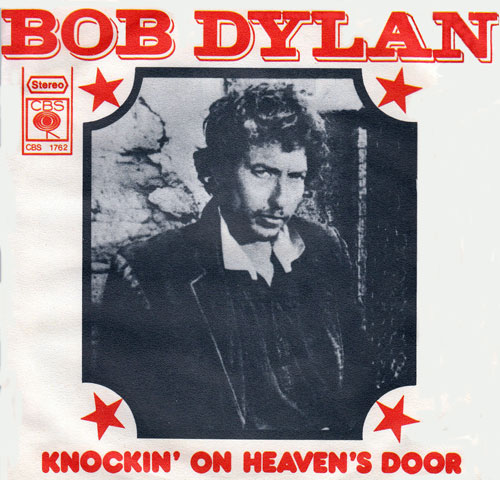
289
When approached as a minor release in his catalog, there’s a lot of value to be found in Bob Dylan’s soundtrack to 1973’s Pat Garrett & Billy the Kid – a film that also found Dylan playing a small acting role. Alongside a set of charming instrumentals and laid-back vocal tracks, one moment stands out as the soundtrack’s major statement.
Written specifically for the film – and released as a single shortly after – “Knockin’ on Heaven’s Door” is one of Dylan’s most stirring songs. Far removed from the winding surrealism of his mid-sixties peak – and far more consequential than his deliberately low-key early-seventies work – it stands as a shockingly direct and powerful piece of writing from an artist who had seemingly shunned such forthright material almost a decade prior.
Dylan’s turn toward more candid writing would reach full fruition on 1975’s Blood on the Tracks. While that album would rightfully be hailed as a masterpiece upon its release, it merely clinched a comeback that had already begun with this remarkable track.
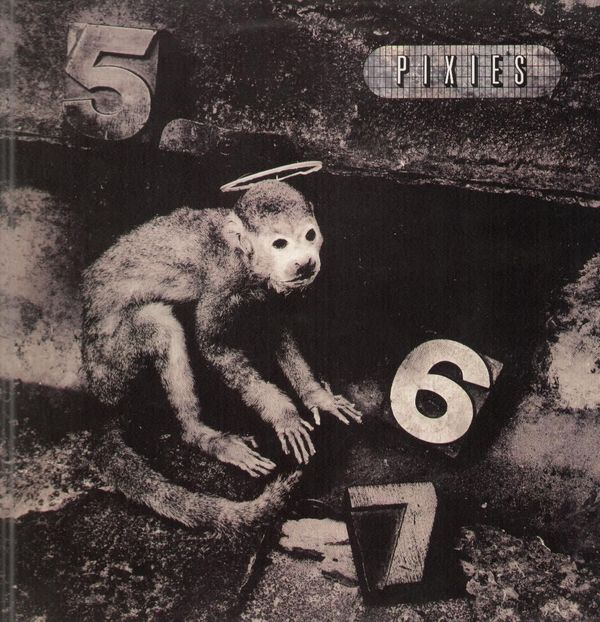
288
One of Black Francis’ most cryptic songs, “Monkey Gone to Heaven” is the chilling centerpiece of Pixies’ 1989 masterwork, Doolittle. Juxtaposing impending environmental destruction with the biblical fascinations that had echoed in the group’s lyrics from the outset of their career, “Monkey” condensed nearly everything great about Pixies into a single three-minute song.
Musically, “Monkey Gone to Heaven” takes a mid-tempo approach to the loud-quiet-loud dynamic that would make Pixies a cornerstone of alternative rock in the coming decade. Augmenting the metallic sheen of Black Francis and Joey Santiago’s guitars is Kim Deal’s “heartbeat” bass line, and an understated – but wholly effective – string quartet arrangement.
It’s the track’s third and final verse that remains the head-scratcher. While the meaning of Francis’ numerology remains debated, there’s no denying the impact of the banshee wail that announces his climactic repetitions of “Then GOD is seven!” It was at this point that Pixies found the perfect equilibrium between their subversive impulses and pop acumen.
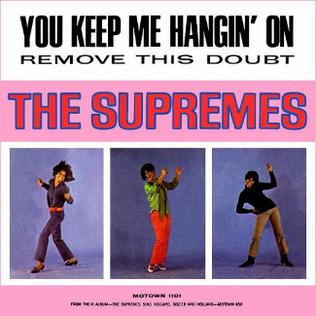
287
A phenomenally written, produced, and performed single, “You Keep Me Hangin’ On” stands among the peak releases of Motown’s golden era. It was also one of the biggest hits by the most successful female vocal group of the sixties, landing at number one in the fall of 1966.
Immediately establishing its sense of urgency with the heavily panned guitar that serves as the song’s main instrumental hook, “You Keep Me Hangin’ On” was an uncharacteristically ominous track from The Supremes. Diana Ross matches the intensity of the music with one of her most powerful vocal performances, while Mary Wilson and Florence Ballard provide their usual steadying presence.
“You Keep Me Hangin’ On” served as something of a bridge between the immaculate pop of Motown’s earlier hits and the harder-edged sounds of late-sixties soul music. It would be a preview of great things to come for the genre, but it arguably stands as the last truly remarkable single from The Supremes.
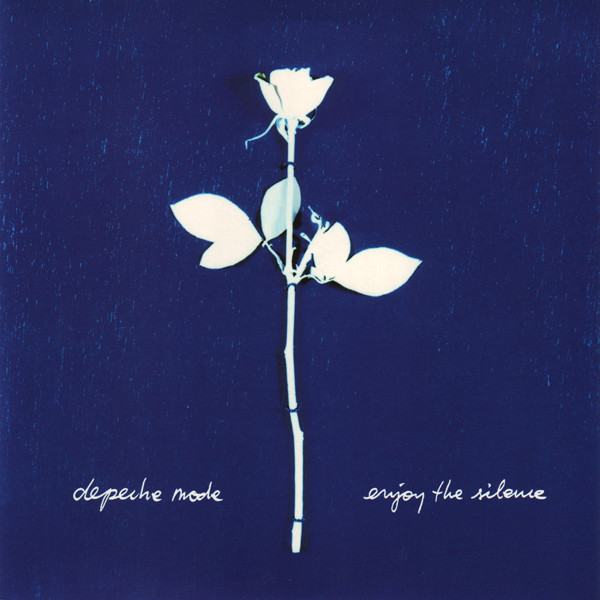
286
Depeche Mode reached a personal peak with this single from 1990’s Violator, and simultaneously crafted the definitive synth pop song in the process. Fully realizing the vision of the group’s earlier work, “Enjoy the Silence” was an unqualified masterpiece of both mood and rhythm.
Sitting at the center of the massively influential group’s greatest album, “Enjoy the Silence” would have already achieved iconic status, but the song proved to be a hit single as well. Boosted by the compelling images of its Anton Corbijn-directed music video, the track would reach the top ten in no less than a dozen countries upon its 1990 release.
On the album, “Enjoy the Silence” is followed by an extended ambient denouement – as if to punctuate the meaning of song’s titular message. Depeche Mode may have been leading figures of a musical movement that was doomed to be rendered dated by its stylistic flourishes and embracement of temporarily cutting-edge production, but with “Enjoy the Silence,” they created something that was utterly timeless.
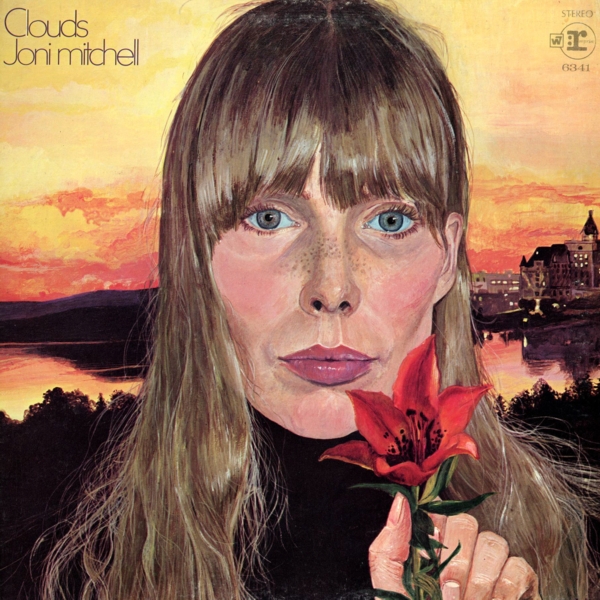
285
The closing track to Joni Mitchell’s second album, “Both Sides, Now” was a surprisingly perceptive song from a still-young songwriter. Finding Mitchell unaccompanied on a set of reflective, introspective verses, the song was one of the earliest to hint at a talent that would soon blossom to stunning heights in the decade to come.
As compelling as Mitchell’s lyrics are, they arguably take a backseat to her remarkable vocal performance. It’s quite possible that there has never been an artist who more effectively matched their gift for poetic verse with a voice that was equally captivating. “Both Sides, Now” was arguably the point in which that potent combination first reached fruition.
Despite Mitchell’s authoritative take on the song, “Both Sides, Now” was originally a hit for Judy Collins in 1968. While Collins’ baroque pop single is plenty charming on its own, Mitchell’s original take – she would revisit the song as the title track to her 2000 album – remains definitive.
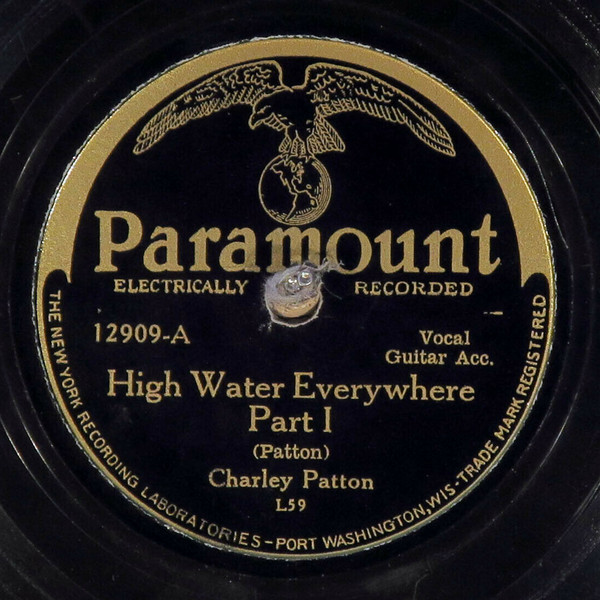
284
The 1927 flood of the Mississippi River was a catastrophe that – in countless ways – was badly mishandled by the federal government. The devastation killed hundreds, left thousands homeless, and further strained racial tensions in the already-volatile South. For decades, the event and its aftermath would serve as both direct (#599, #669) and indirect (#462) inspiration for a number of powerful songs in a variety of genres.
This 1930 two-sided single – bluesman Charley Patton’s masterpiece – is a stirring commentary on the devastation brought by the flood. Patton largely focuses on the pain felt within the African-American community, many of whom would soon join the thousands who had already moved to northern cities as part of the Great Migration.
Despite being issued on the notoriously poor shellac of the Paramount label, Patton’s message comes through loud and clear on “High Water Everywhere.” It’s a riveting account that still sounds immediate, vital, and relevant nearly a century after its recording.
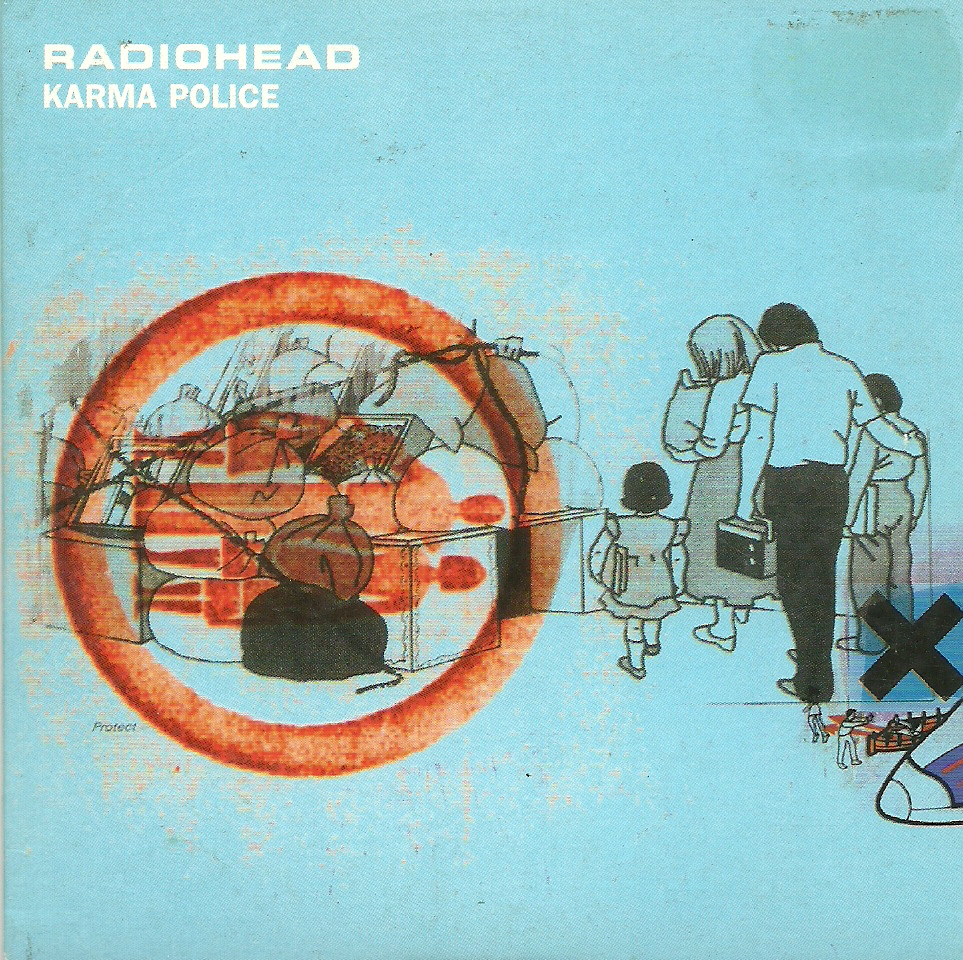
283
There’s no shortage of stunning moments on Radiohead’s exquisite OK Computer, but “Karma Police” may be the album’s most conventionally appealing track. A stately acoustic ballad that matches the group’s flair for the dramatic with an achingly graceful melody, the song closes out OK Computer‘s flawless first half on a glorious note.
On “Karma Police,” Radiohead largely temper the experimental flourishes that characterize most of the surrounding record – save for the track’s discordant closing seconds. What remains is a dazzling display of the group’s songcraft – even if Jonny Greenwood’s haunting piano melody in the chorus borrows a little from “Sexy Sadie.”
“Karma Police” would be released as the second single from OK Computer – perhaps a bit of a course correction following the disorienting nature of the advance single, “Paranoid Android.” Coupled with one of the group’s most alluring music videos, the song would serve as an enticing invitation to a momentous album.
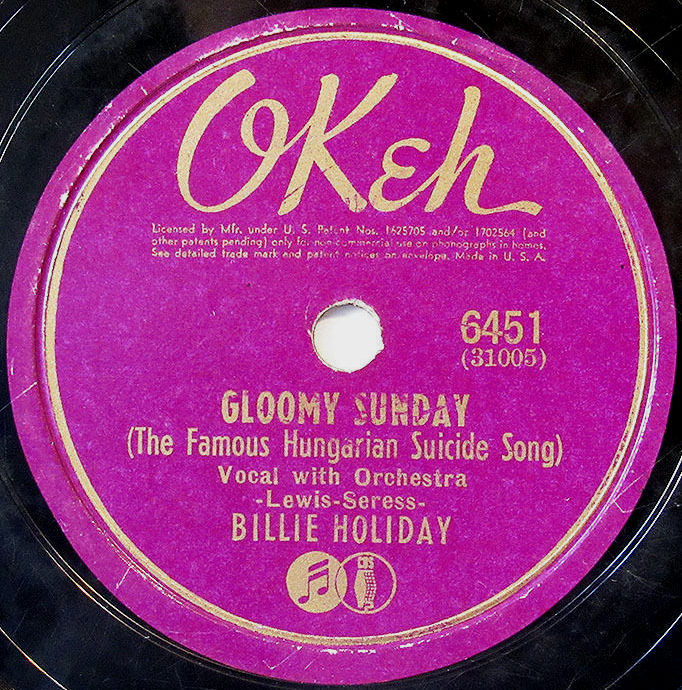
282
Written in 1933 by Rezső Seress, “Gloomy Sunday” would become known as the “Hungarian Suicide Song.” While its infamy would largely be tied to dubious speculation, Seress himself died by his own hand in 1968. Naturally, the song was a perfect fit for the mournful vocals of the legendary Billie Holiday.
Though several versions of the song – in both Hungarian and English – would be recorded before Holiday took a turn with it in 1941, her interpretation of “Gloomy Sunday” brought the track to a far greater audience. What Holiday may have lacked in vocal range she more than made up for in expression, and the song’s weary pacing, melancholy melody, and dour atmosphere found a kindred spirit in her voice.
Over the years, a number of iconic artists – Elvis Costello, Björk, Ray Charles, and Serge Gainsbourg, to name a few – have recorded “Gloomy Sunday.” However, Holiday’s captivating take remains the definitive version of a fascinating song.
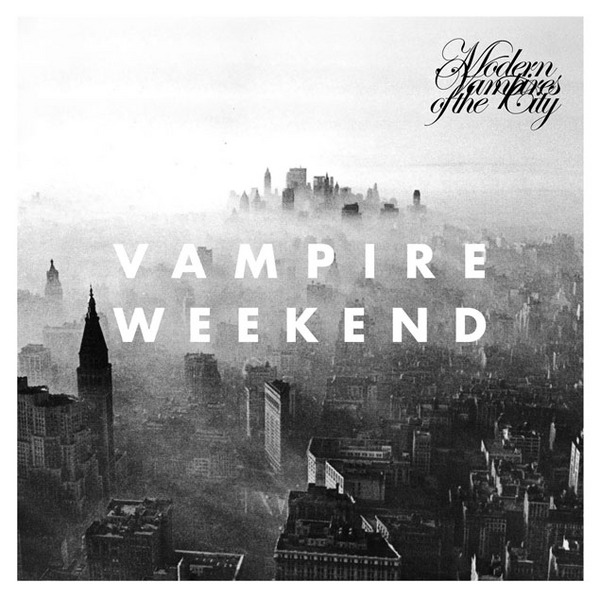
281
2013’s Modern Vampires of the City found Vampire Weekend moving far beyond the seemingly-ephemeral charms of their first two records, and crafting a modern classic. The album’s gorgeous centerpiece, “Hannah Hunt” is the New York group’s finest song to date.
A delicate baroque pop confection, “Hannah Hunt” recasts Simon & Garfunkel’s “America” for the millennial generation – wrapping a complicated relationship story into a vivid travelogue. Frontman Ezra Koenig ditches the smirking cleverness that was frequently employed in his earlier work to craft a narrative that is shaded with just the right amount of ambiguity.
The song’s final chorus finds its narrator reaching a point of exasperation with his traveling companion. Set to a lushly clattering arrangement – no doubt the handiwork of the band’s since-departed multi-instrumentalist, Rostam Batmanglij – “Hannah Hunt” opens up momentarily, before drifting back into a ravishing denouement.


